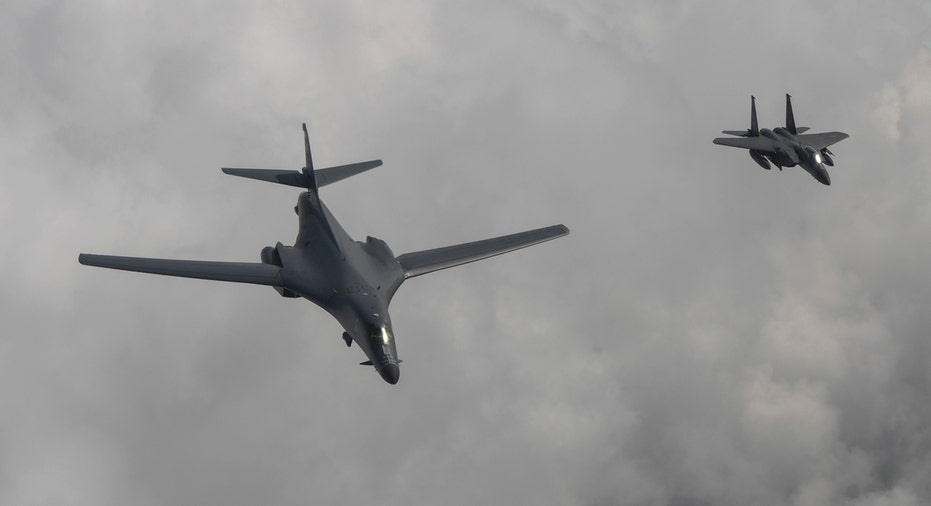US bombers fly over South Korea after North's 2nd ICBM test

SEOUL, South Korea (AP) — The United States flew two supersonic bombers over the Korean Peninsula on Sunday in a show of force against North Korea following the country's latest intercontinental ballistic missile test. The U.S. also said it conducted a successful test of a missile defense system located in Alaska.
The B-1 bombers were escorted by South Korean fighter jets as they performed a low-pass over an air base near the South Korean capital of Seoul before returning to Andersen Air Force Base in Guam, the U.S. Pacific Air Forces said in a statement.
It said the mission was a response to North Korea's two ICBM tests this month. Analysts say flight data from the North's second test, conducted Friday night, showed that a broader part of the mainland United States, including Los Angeles and Chicago, is now in range of Pyongyang's weapons.
"North Korea remains the most urgent threat to regional stability," said Gen. Terrence J. O'Shaughnessy, Pacific Air Forces commander. "Diplomacy remains the lead. However, we have a responsibility to our allies and our nation to showcase our unwavering commitment while planning for the worst-case scenario."
"If called upon, we are ready to respond with rapid, lethal, and overwhelming force at a time and place of our choosing," O'Shaughnessy said.
Sen. Dianne Feinstein, a California Democrat, told CBS' "Face the Nation" that North Korea's latest test presents a clear and present danger to the United States.
"I've spent time on the intelligence and at the briefings, and done as much reading as I possibly could," said Feinstein, a member of the Senate Intelligence Committee. "And I'm convinced that North Korea has never moved at the speed that this leader has to develop an ICBM."
Feinstein said the situation shows the danger of isolating a country.
"I think the only solution is a diplomatic one," she said. "I'm very disappointed in China's response, that it has not been firmer or more helpful."
The United States often sends powerful warplanes in times of heightened tensions with North Korea. B-1 bombers have been sent to South Korea for flyovers several times this year in response to the North's banned missile tests, and also following the death of a U.S. college student last month after he was released by North Korea in a coma.
The Hwasong-14 ICBM, which the North first tested on July 4, is the highlight of several new weapons systems Pyongyang launched this year. They include an intermediate range missile that North Korea says is capable of hitting Alaska and Hawaii, and a solid-fuel midrange missile, which analysts say can be fired faster and more secretly than liquid-fuel missiles.
The U.S. Missile Defense Agency said a Terminal High Altitude Area Defense, or THAAD, system located in Kodiak, Alaska, was successfully tested on Saturday night, Alaska time. It said that a medium-range ballistic missile was air-launched over the Pacific, and that the THAAD system detected, tracked and intercepted the target.